12 places you need to see on a trip to Romania
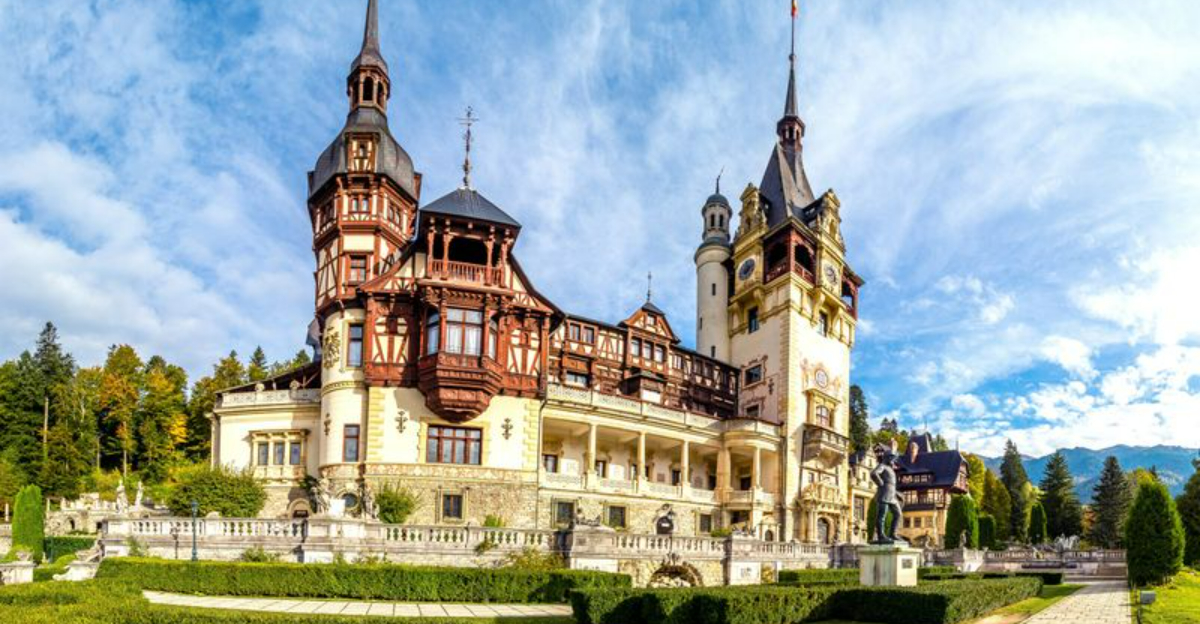
Romania offers travelers a magical mix of medieval towns, stunning mountains, and rich cultural heritage. From the legendary Dracula’s Castle to the pristine Danube Delta, this Eastern European gem remains one of Europe’s best-kept secrets.
I’ve explored this fascinating country multiple times and want to share the most unforgettable spots you absolutely must visit on your Romanian adventure.
1. Bran Castle: The Mysterious Home of Dracula

Perched dramatically on a rocky hillside, Bran Castle instantly triggers goosebumps with its imposing turrets and connection to Bram Stoker’s Dracula. Though historically Vlad the Impaler had minimal ties here, the castle’s spooky atmosphere makes it Romania’s most famous attraction.
Walking through its narrow corridors and secret passageways feels like stepping back in time. The stone walls hold centuries of stories, while rooms filled with antique furniture showcase royal living from bygone eras.
If you visit during October, you might catch special Halloween events that bring vampire legends to life. Despite tourist crowds, the castle’s eerie charm and breathtaking mountain views make it worth every minute of your time.
2. Painted Monasteries of Bucovina: Medieval Masterpieces

Hidden among rolling hills in northern Romania, the painted monasteries of Bucovina showcase some of Europe’s most remarkable religious art. These UNESCO-protected 15th and 16th-century churches feature vibrant frescoes covering both interior and exterior walls.
What makes these monasteries truly special is how the colors have survived for centuries despite harsh weather. Voronet Monastery, nicknamed the ‘Sistine Chapel of the East,’ dazzles visitors with its distinctive blue pigment that scientists still can’t fully replicate today.
Moldovita, Sucevita, and Humor monasteries each tell biblical stories through distinctive artistic styles. Many are still active religious centers where nuns and monks maintain ancient traditions, adding an authentic spiritual dimension to your visit.
3. Transfăgărășan Highway: Europe’s Most Spectacular Road
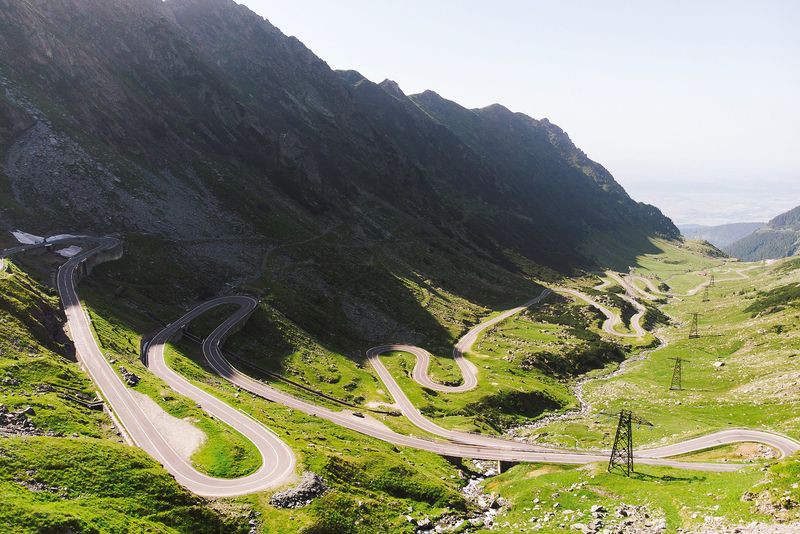
Winding dramatically through the Carpathian Mountains, the Transfăgărășan Highway offers possibly the most thrilling drive in all of Europe. Built as a military route in the 1970s, this engineering marvel stretches 90 kilometers through Romania’s most imposing mountain range.
Sharp hairpin turns and steep climbs reward drivers with jaw-dropping views at every bend. The road peaks at the glacial Bâlea Lake, where you can stop for photos or hike along alpine trails surrounded by rugged peaks.
Keep your eyes peeled for wildlife like chamois and eagles along the way. Remember that heavy snow closes the road from late October through June, so summer and early fall provide your only window to experience this bucket-list drive featured on Top Gear as ‘the world’s best road trip.’
4. Sighișoara: Time Travel to Medieval Transylvania

Stepping into Sighișoara’s cobblestone streets feels like walking straight into a fairy tale. This perfectly preserved medieval citadel, with its colorful buildings and imposing clock tower, remains one of Europe’s few still-inhabited medieval fortresses.
History whispers from every corner of this UNESCO site, most famously as the birthplace of Vlad the Impaler (the real-life inspiration for Dracula). You can actually visit his childhood home, now converted into a restaurant serving traditional Romanian dishes.
Don’t miss climbing the covered wooden staircase to the Church on the Hill or catching sunset from the clock tower viewpoint. The town hosts a medieval festival each July where locals dress in period costumes and demonstrate traditional crafts, making summer visits especially memorable.
5. Danube Delta: Europe’s Wildlife Paradise
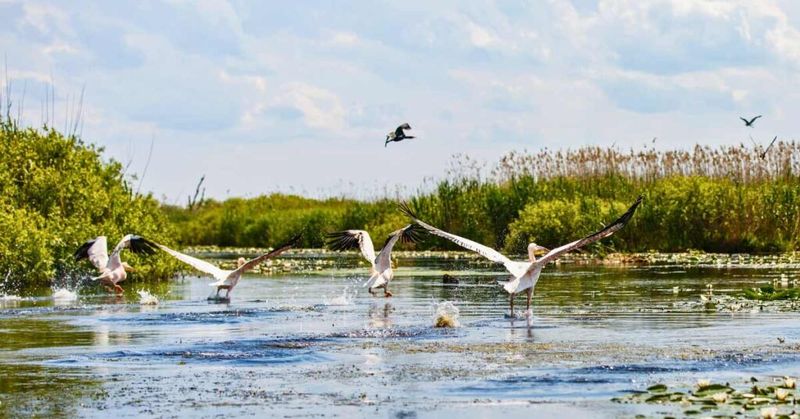
Where the mighty Danube River meets the Black Sea lies Europe’s best-preserved delta and a birdwatcher’s dream come true. This vast wetland ecosystem hosts over 300 bird species, making it the continent’s premier bird-watching destination.
Gliding through narrow channels on a traditional wooden boat reveals a world where humans take a backseat to nature. Fishermen still live in floating villages, harvesting reeds and catching fish using techniques unchanged for generations.
Spring and fall bring spectacular bird migrations, while summer offers warm waters perfect for swimming. The delta’s constantly shifting landscape of lakes, channels, and islands creates a magical feeling of discovery. Despite being Romania’s flattest region, the biodiversity here rivals the country’s more famous mountain destinations.
6. Peleș Castle: Royal Mountain Retreat

Nestled in the Carpathian foothills near Sinaia, Peleș Castle stands as Romania’s most opulent royal residence. Unlike the medieval fortresses elsewhere in the country, this Neo-Renaissance masterpiece looks plucked straight from a German fairy tale with its timber-framed facades and pointed turrets.
Inside, the jaw-dropping luxury continues across 160 rooms filled with Murano crystal chandeliers, Cordoba leather walls, and one of Europe’s finest weapons collections. King Carol I spared no expense, incorporating cutting-edge technology for its time – including central vacuum systems and elevators.
The surrounding English-style gardens offer peaceful walking paths with mountain views. Photography permits cost extra but are worth it for interior shots. Visit early morning to avoid tour groups and experience the magic of this royal mountain retreat at its most serene.
7. Sibiu: Transylvania’s Cultural Gem
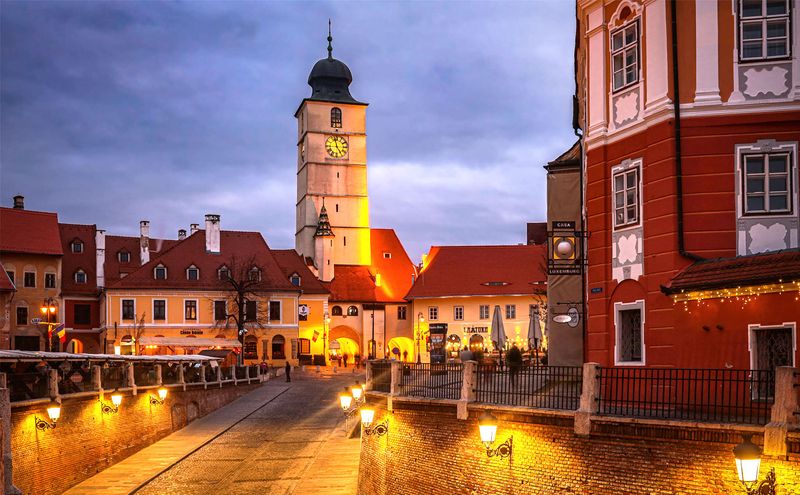
Walking through Sibiu’s grand squares feels like discovering a secret slice of Austria hidden in Romania. This former European Capital of Culture charms visitors with its distinctive architecture featuring houses with ‘eyes’ – attic windows that seem to watch your every move.
The city unfolds across three connected squares, each offering its own atmosphere. Grab coffee in Piața Mare (Big Square), then wander to the smaller squares where artisan shops and museums await. The Bridge of Lies, shrouded in local legends, connects the upper and lower towns.
Did you know Sibiu’s medieval walls once had 39 defensive towers? Today, you can still climb several for panoramic views. As evening falls, restaurants around the squares fill with locals and visitors enjoying hearty Transylvanian cuisine, creating a vibrant atmosphere that showcases Romanian culture at its finest.
8. Corvin Castle: Gothic Fortress of Legends

Rising dramatically above a small river on massive stone pillars, Corvin Castle (Hunedoara Castle) might be Romania’s most imposing medieval fortress. Its towering defensive walls, pointed turrets, and drawbridge transport visitors straight into a medieval fantasy world.
Built in the 15th century by John Hunyadi, this Gothic-Renaissance castle boasts a fascinating blend of military strength and noble living. The Knight’s Hall echoes with history, while the torture chamber in the dungeons reminds visitors of darker medieval practices.
Legend claims Vlad the Impaler was imprisoned here, though historians debate this story. The castle served as a filming location for numerous movies and shows, including Ghost Riders and parts of The Nun. For the full dramatic effect, try visiting at sunset when the stone walls glow golden against the darkening sky.
9. Maramureș: Land of Wooden Churches and Rural Traditions
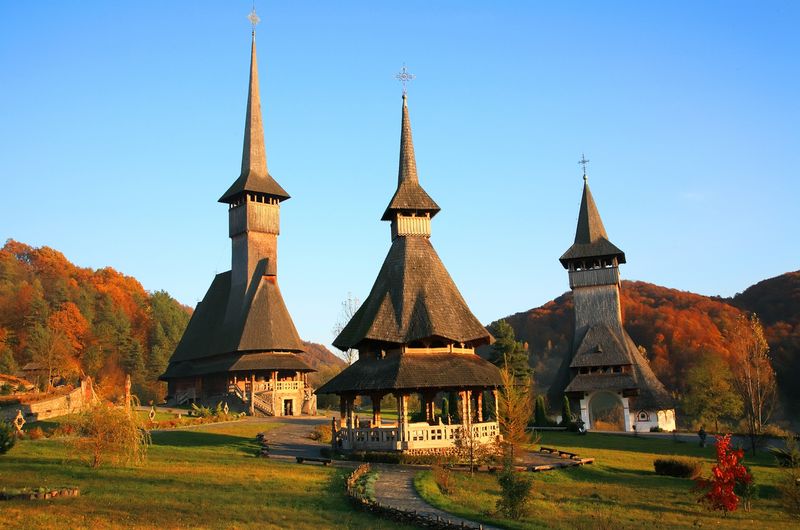
Tucked away in Romania’s northern reaches, Maramureș feels like stepping back centuries into Europe’s rural past. This region’s wooden churches, with their impossibly tall spires reaching skyward, represent some of the world’s most remarkable wooden architecture.
What makes visiting here special is experiencing village life that follows the rhythm of seasons rather than smartphones. Farmers still cut hay by hand, and horse-drawn carts remain common transportation. The intricate wooden gates protecting homesteads feature symbols dating back to pre-Christian times.
Don’t miss the Merry Cemetery in Săpânța, where colorful tombstones humorously depict the deceased’s life stories. For an immersive experience, stay in a traditional wooden house where local families serve home-cooked meals featuring ingredients from their gardens and homemade țuică (plum brandy).
10. Salina Turda: Underground Salt Mine Wonderland
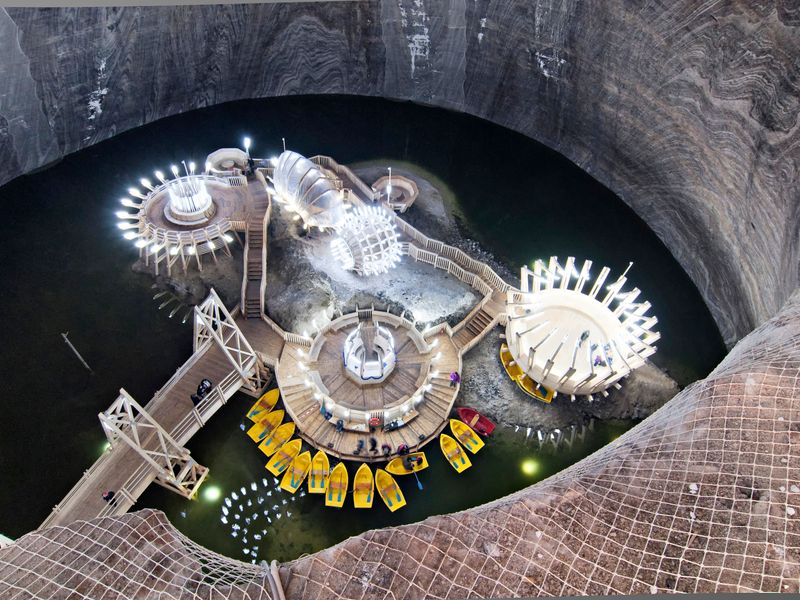
Descending into Salina Turda feels like entering an alien world hidden beneath Romania’s surface. This former salt mine transformed into the world’s most surreal underground amusement park offers a truly unique experience you won’t find anywhere else.
The main chamber, a massive bell-shaped cavern, houses a Ferris wheel, mini-golf course, and rowing boats that glide across an underground lake. Stalactites of salt hang from ceilings while eerie lighting creates an otherworldly atmosphere throughout the mine.
Beyond entertainment, the mine serves therapeutic purposes – its microclimate rich in salt aerosols benefits respiratory conditions. Dating back to the Middle Ages, Salina Turda operated as a working mine until 1932. Today, this strange subterranean wonderland perfectly balances historical significance with bizarre entertainment, making it one of Romania’s most unexpected must-see attractions.
11. Bucharest: Little Paris of the East
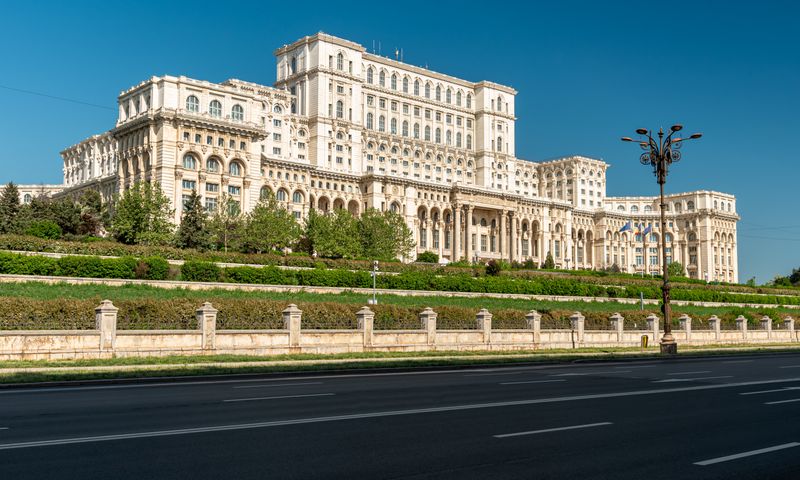
Romania’s capital surprises visitors with its fascinating blend of architectural styles – from Belle Époque buildings that earned it the nickname ‘Little Paris’ to imposing Communist-era monuments.
The massive Palace of Parliament, the world’s second-largest administrative building after the Pentagon, stands as Ceaușescu’s most controversial legacy.
Contrast this with the charming Old Town (Lipscani), where narrow cobblestone streets lead to hidden courtyards housing some of Eastern Europe’s trendiest bars and restaurants. The area comes alive after dark when locals and tourists mingle in its vibrant nightlife scene.
History buffs shouldn’t miss the Village Museum, an open-air collection of traditional houses from across Romania. For a taste of local life, spend an afternoon people-watching in Herăstrău Park or browsing the weekend antique market at Strada Covaci.
12. Retezat National Park: Hiker’s Paradise
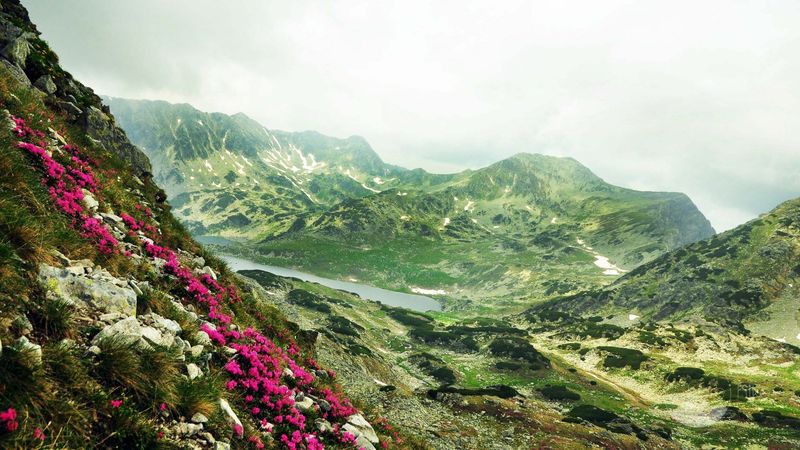
Hidden in Romania’s southern Carpathians, Retezat National Park protects some of Europe’s most pristine mountain wilderness. Over 80 glacial lakes, known locally as ‘the blue eyes of the mountains,’ dot landscapes ranging from dense forests to alpine meadows bursting with wildflowers.
Hiking here rewards with solitude rarely found in more famous European mountain destinations. The park’s biodiversity impresses even seasoned nature lovers – over a third of Romania’s flora species grow within its boundaries, alongside healthy populations of chamois, red deer, and brown bears.
The Bucura Lake circuit offers a perfect introduction to Retezat’s beauty, though serious hikers should attempt the challenging summit of Peleaga Peak (2,509m). Summer brings ideal hiking conditions, but September offers spectacular fall colors with fewer fellow travelers. Remember to secure accommodations in advance as mountain huts have limited capacity.
